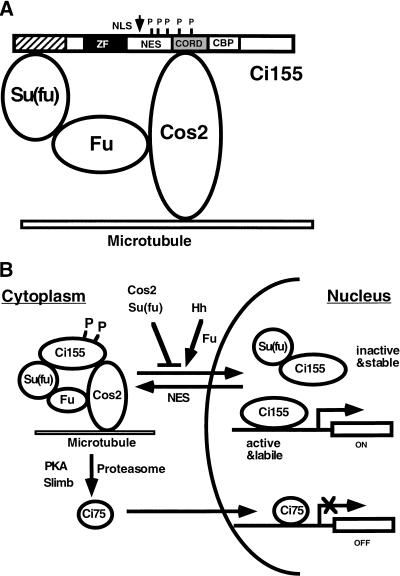Figure 9.
Model for regulating Ci nuclear import and activity by complex formation with Cos2, Fu, and Su(fu). (A) A drawing of Ci/Cos2/Fu/Su(fu) tetrameric complex bound to microtubules, with full-length Ci (Ci155) represented by a bar. Several functional motifs of Ci are indicated. The stippled box indicates the Cos2 binding domain (CORD); the hatched box indicates the Su(fu) binding domain; the filled box represents the Zn-finger DNA-binding domain (ZF) ; and the open box depicts the dCBP binding domain (CBP). The short vertical lines mark the positions of PKA phosphorylation sites and the arrow indicates the cleavage site. NLS: nuclear localization signal; NES: nuclear export signal; P: PKA phosphorylation sites. (B) Regulation of Ci processing, nuclear import and transcriptional activity. Cos2 and Su(fu) prevent Ci nuclear translocation by tethering it in the cytoplasm whereas Hh stimulates Ci nuclear import through Fu. Su(fu) also affects the activity of full-length Ci after it enters the nucleus. Cos2 promotes proteolytic processing of Ci in conjunction with PKA, Slimb, and proteasome to generate a C-terminally truncated form of Ci (Ci75), which translocates into the nucleus to repress Hh target gene expression. See text for details.

